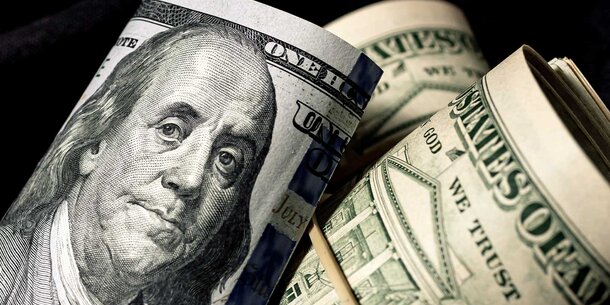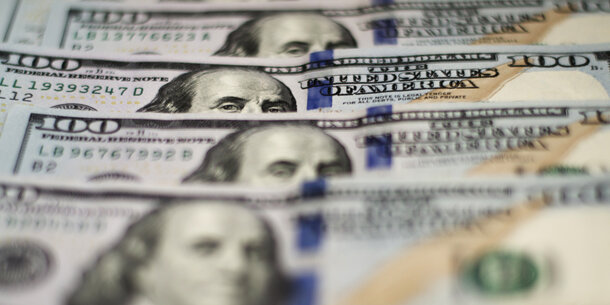Ten years ago in Citizens United, the Supreme Court slashed commonsense limits on campaign cash and set America’s campaign finance system on a path to overwhelming dominance by the ultra-wealthy few. But a bill passed by the House and pending in the Senate has the most promising answer: a public financing program that would amplify the voices of small donors, so the flood of megadonor money can be balanced by supercharged funding from regular people. Our new analysis shows that it would fundamentally transform campaign financing for the better.
Since Citizens United, the share of election funding from megadonors has mushroomed: in 2016, a few donors of more than $100,000 accounted for more than half of all election spending, dwarfing the money given by millions of small donors. Even with the boom in grassroots engagement and small donations in 2018, small donors were overshadowed by megadonors. Without reform, the gap is only going to widen.
The imbalance in campaign finance has made many Americans frustrated and cynical. But while it may be easy to see the current state of money in politics as inevitable, the truth is powerful fixes are available to restore balance and empower everyday people.
Public campaign financing has succeeded in changing the way politicians raise money in states and cities across the country, from Maine to Arizona and New York City to Los Angeles. It reduces candidates’ need to chase big donors and makes typical Americans the most important source of funds. The boost that public financing gives small donors is needed now more than ever because non-millionaires simply can’t keep up with the gains at the top.
In March 2019, the House passed H.R. 1, the For the People Act, a comprehensive democracy reform package. The bill includes a system of public financing for House elections that would multiply small contributions by matching donations of $200 or less at a rate of six to one. A $200 donation would get a $1,200 match, making it worth $1,400 to the campaign. Candidates can choose to opt in if they show they have substantial public support. Those participating may not accept more than $1,000 in private funds from each donor — significantly lower than the contribution limit of $5,600 for the 2020 election cycle. And the amount of public funds each candidate can earn in an election cycle is capped.
Our analysis uses Federal Election Commission data from past elections to model how this system would likely affect fundraising in House elections. The data shows that there would be profound changes, most importantly that almost all candidates would be able raise as much or more money while relying almost entirely on small donations.
Turning the current landscape on its head, public matching makes small donations the most valuable source of funds to every candidate who opts in. Small donations and matching funds together would have accounted for well over half of election funding across recent cycles. In 2018, had the great majority of candidates run under this system, the share of money coming from small donors would jump from 13 percent to 56 percent with the match.
These results are consistent with real-world experiences with a small-donor matching programs. For instance, in New York City, which has used this type of system for decades, matched small donations are the source for more than 60 percent of campaign funds.
Our analysis makes two key assumptions. First, we assume the candidates would not have changed the way they raised money. That is, we assume candidates would have gone to the same donors they went to in those past years; the only change would have been asking those donors for just $200, even if the donors had the capacity to give more. A $200 donation combined with the $1,200 public match would be the most valuable contribution, since the maximum donation to participating candidates is $1,000. Of course, in reality, matching funds bring new donors into the system. Candidates would have a big incentive to look for new small donors, and people are encouraged to give when they know their money gets matched, potentially making the effects even more profound.
Second, we assume every candidate who would have raised as much or more money participating in the program joined it. In 2018, that amounted to 94 percent of House candidates. To put that rate in perspective, successful public financing programs across the country have enjoyed high participation rates — some above 90 percent — by candidates from both parties.
But even with a much lower participation rate, H.R. 1’s public financing program would be transformative. If only half of candidates opted in, the relative giving power of small donors and those giving the maximum contribution would still be reversed from the status quo. Small donors would have accounted for more than a third of candidate funding over recent cycles. In 2018, small donations would have been boosted from 13 percent to 37 percent when combined with matching funds.
Public financing has the power to fundamentally change the way members of Congress fund their campaigns. Candidacies powered by small donations spur people running for office to connect with their constituents rather than rich donors on a call list. Candidates who lack wealthy connections but have broad public support will be able to run competitive campaigns.
In Citizens United and other decisions, the Supreme Court has blocked lawmakers from putting reasonable limits on the amounts of money the superrich can give to get politicians elected, so Congress can’t stop wealthy interests from offering mind-boggling amounts. But public campaign financing can reduce candidates’ demand for those big donations by amplifying support from regular people.
Notes on methodology
Since the program in H.R. 1 limits private contributions to $1,000, the largest private contributions are worth less than a matched small donation. So participating candidates would only ask for and accept donations of $200 or less. However, candidates who earn the maximum amount of public funds would no longer have small donations matched and could switch to soliciting $1,000 donations. H.R. 1 also includes an “enhanced match” available to certain candidates in the last two months of the election, which we did not model for the sake of simplicity.
Because of this incentive structure, our analysis converts donations of $200 or more into matched $200 donations. Donations of less than $200 remain the same and are matched. For those candidates who hit the public funds cap, we converted their largest donations greater than $1,000 into unmatched $1,000 donations.
We assumed participation by all candidates who would raise as much or more money under public financing, except when otherwise noted. We made no changes to fundraising by nonparticipants, who disproportionately relied on donors giving large amounts, up to the contribution limit, which for all cycles we analyzed was $5,000 or greater.




